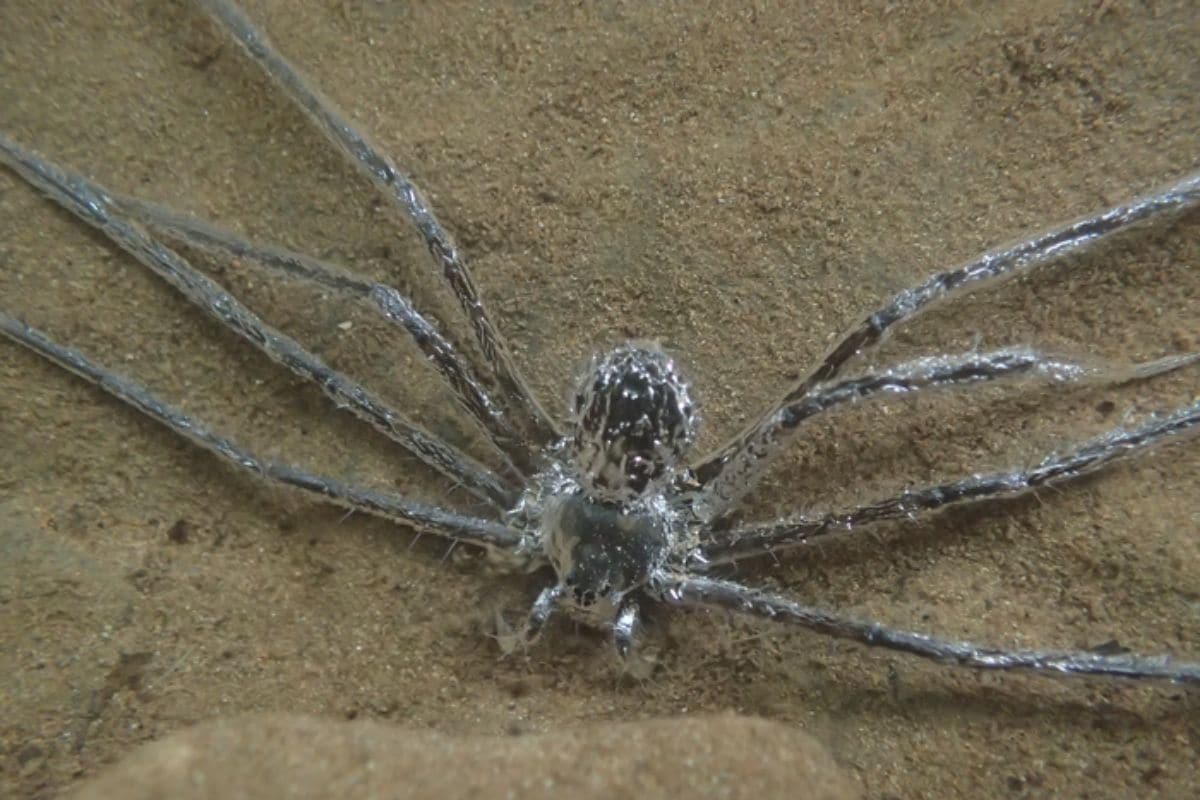

A clever, but also quite unusual tactic.
When a spider feels threatened, it will run nine times out of ten. But the big, quite terrifying tropical spider Trechalea extenso adopts a different tactic. Researchers have discovered that in case of danger, he runs straight into the water. And then he can play hide-and-seek underwater for half an hour.
Water
Researcher Lindsey Swierk observed how Trechalea extenso hid in the water when people were around. A surprising discovery. Because it was not yet known that this spider species seeks refuge under water. “For many species, getting wet and cold is almost as risky as coming face to face with a predator,” she explains.
30 minutes
Not just flight Trechalea extenso apparently into the water, it also stays submerged for a very long time. It can last up to 30 minutes underwater. A great achievement. Swierk had already observed a Costa Rican lizard species that, when hiding from predators, spends 16 minutes underwater. But Trechalea extenso lasts almost twice as long. “It was not previously known that Trechaleaspiders hide under water at all – and certainly not for that long,” says Swierk.
How?
How can the spider survive in the water for so long? Swierk discovered that the tropical spider creates a kind of air layer that encloses its entire body. The researcher suspects that this layer of air is due to the fluffy hairs that Trechalea extenso equipped is held in place. This creates a kind of ‘water-repellent shield’. Then this shield keeps the spider warm and prevents water from entering the respiratory organs.

A silvery film of air covers the entire body of Trechalea extenso. Image: Lindsey Swierk
According to Swierk, it is a fascinating sight. “It looks like the spider is wrapped in silver,” she says.
New insights
It is certainly not self-evident that land animals hide under water from predators. Trechalea extenso therefore offers new insight into how some species cope with the problems associated with them. “These spiders, and any animal that hides from predators in general, must do their best to mitigate the risks,” says Swierk. “It’s not just about the risk of being eaten, but also the risks associated with flights. For some species, this means leaving their territory or mates unattended, or perhaps expending stored energy on a sprint. Bee Trechalea extenso lurks a lack of oxygen and loss of body heat.” Although the spider seems to put a stop to that in a clever way.
All in all, the study offers interesting insights into the curious but fascinating behavior of a land spider and how it cleverly escapes the eye of a predator. Research into the spider continues. “There are still many pressing questions that we want to delve into further,” concludes Swierk.
Source material:
†Spider can hide underwater for 30 minutes” – Binghamton University
Image at the top of this article: Lindsey Swierk